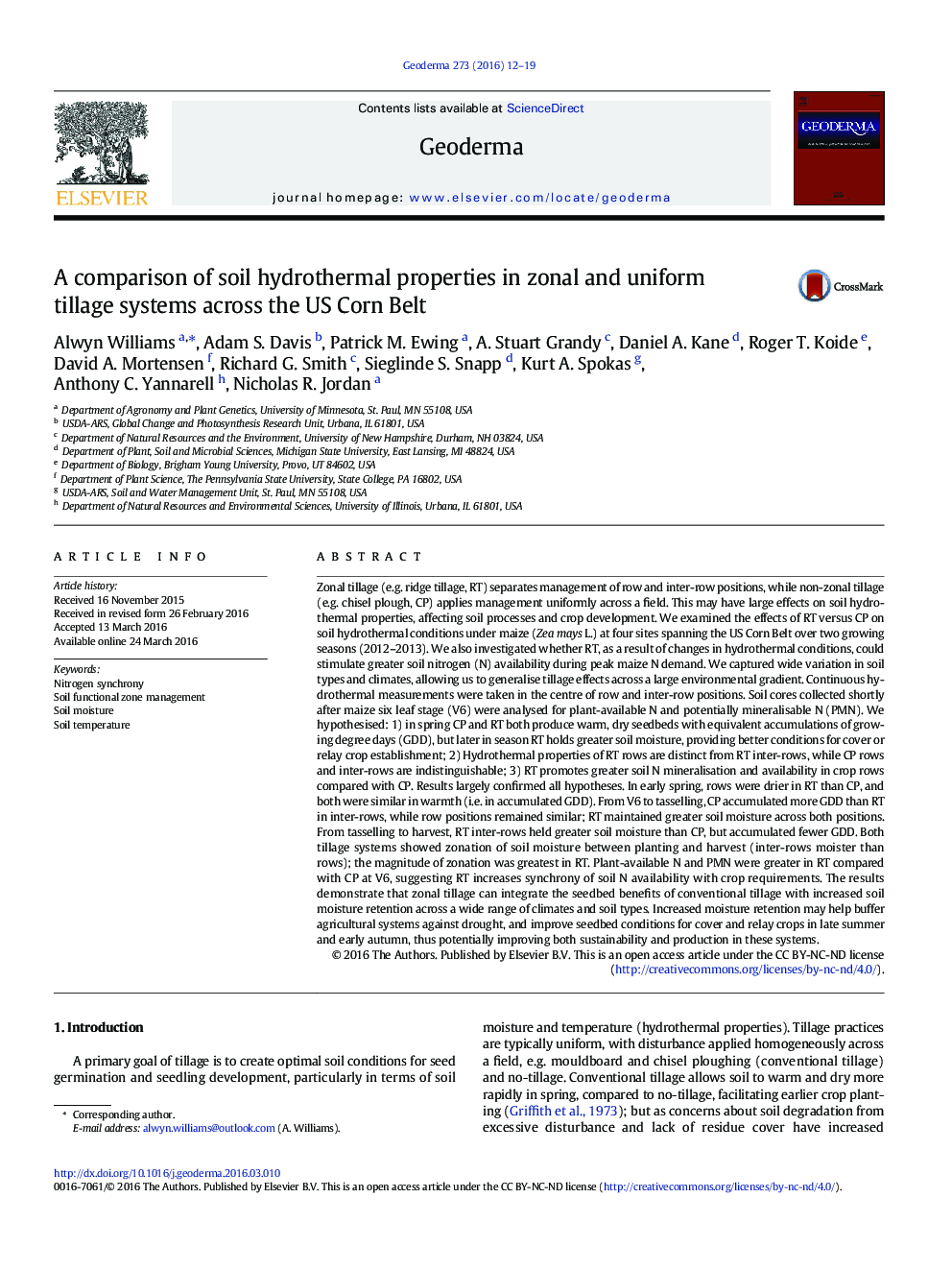| کد مقاله | کد نشریه | سال انتشار | مقاله انگلیسی | نسخه تمام متن |
|---|---|---|---|---|
| 6408330 | 1629444 | 2016 | 8 صفحه PDF | دانلود رایگان |
- Spring seedbed less prone to excess moisture in zonal tillage than uniform tillage
- Seedbed accumulation of thermal time was equivalent in zonal and uniform tillage.
- Zonal tillage maintained greater soil moisture in inter-rows than uniform tillage.
- Zonal tillage increased soil available N, coinciding with peak maize N demand.
Zonal tillage (e.g. ridge tillage, RT) separates management of row and inter-row positions, while non-zonal tillage (e.g. chisel plough, CP) applies management uniformly across a field. This may have large effects on soil hydrothermal properties, affecting soil processes and crop development. We examined the effects of RT versus CP on soil hydrothermal conditions under maize (Zea mays L.) at four sites spanning the US Corn Belt over two growing seasons (2012-2013). We also investigated whether RT, as a result of changes in hydrothermal conditions, could stimulate greater soil nitrogen (N) availability during peak maize N demand. We captured wide variation in soil types and climates, allowing us to generalise tillage effects across a large environmental gradient. Continuous hydrothermal measurements were taken in the centre of row and inter-row positions. Soil cores collected shortly after maize six leaf stage (V6) were analysed for plant-available N and potentially mineralisable N (PMN). We hypothesised: 1) in spring CP and RT both produce warm, dry seedbeds with equivalent accumulations of growing degree days (GDD), but later in season RT holds greater soil moisture, providing better conditions for cover or relay crop establishment; 2) Hydrothermal properties of RT rows are distinct from RT inter-rows, while CP rows and inter-rows are indistinguishable; 3) RT promotes greater soil N mineralisation and availability in crop rows compared with CP. Results largely confirmed all hypotheses. In early spring, rows were drier in RT than CP, and both were similar in warmth (i.e. in accumulated GDD). From V6 to tasselling, CP accumulated more GDD than RT in inter-rows, while row positions remained similar; RT maintained greater soil moisture across both positions. From tasselling to harvest, RT inter-rows held greater soil moisture than CP, but accumulated fewer GDD. Both tillage systems showed zonation of soil moisture between planting and harvest (inter-rows moister than rows); the magnitude of zonation was greatest in RT. Plant-available N and PMN were greater in RT compared with CP at V6, suggesting RT increases synchrony of soil N availability with crop requirements. The results demonstrate that zonal tillage can integrate the seedbed benefits of conventional tillage with increased soil moisture retention across a wide range of climates and soil types. Increased moisture retention may help buffer agricultural systems against drought, and improve seedbed conditions for cover and relay crops in late summer and early autumn, thus potentially improving both sustainability and production in these systems.
Journal: Geoderma - Volume 273, 1 July 2016, Pages 12-19
